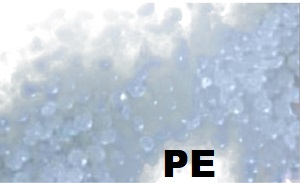 SINGAPORE (ICIS)–Southeast Asia’s polyethylene (PE) market may be facing longer supply in the second half, hinging on how the US-China trade spat plays out, amid the region’s weakening demand for imports.
SINGAPORE (ICIS)–Southeast Asia’s polyethylene (PE) market may be facing longer supply in the second half, hinging on how the US-China trade spat plays out, amid the region’s weakening demand for imports.
Global PE trade flows will be affected should China, the biggest importer of spot PE cargoes in the world, decide to impose retaliatory 25% tariff on US cargoes.
Southeast Asia as an alternative buying region might be hard pressed to absorb additional supply from the US, where massive PE capacities recently started up which were meant to cater to huge Chinese demand.
Around 5m tonnes of additional US PE capacities are expected from several major projects, including those in the pipeline to start up within the second half of 2018.
China primarily imports PE cargoes from Asia and the Middle East, while the US is its sixth leading PE supplier in 2017.
“Eventually, more substantial and regular volume of US [PE] cargoes are expected to be traded in Asia in the second half of the year as we have yet to see them in the first half of this year,” said a regional trader.
Any changes in trade flows would pose challenges to US suppliers in the short term as they would need to revamp their logistics and distribution channels to redirect cargoes to other markets.
Suppliers from the Middle East, meanwhile, might take the opportunity to supply more cargoes to China, and would mean fewer volumes available to the southeast Asian market.
The Middle East is southeast Asia’s major PE supplier.
Demand for PE imports in southeast Asia has been weak amid low prices in the domestic markets, as in the case of Thailand.
“Thai traders are not keen to import as local prices are more competitive so they do not have the margin to sell the imported cargoes in local market. Only some converters who need specific cargoes continue to import,” said a local Thai trader.
For Malaysia and Indonesia, which have predominantly Muslim population, market activity has slowed down since mid-May, when Ramadan – the Muslim fasting month – started and which will end with the Eid ul-Fitr holiday on 15 June.
The Indonesian government has declared a longer Eid-ul Fitr holiday this year from 11-20 June.
Markets in Singapore and the Philippines will be closed for the mid-June holiday as well.
With supply expected to become long, some market players expect regional PE prices in July and August to ease from June, with restocking activities expected to kick in towards the end of the third quarter.
In the first half of 2018, southeast Asia’s average prices for commodity PE were largely stable to firm owing to suppliers’ relatively comfortable-to-tight supply for most of the period.
At the start of June, high density polyethylene (HDPE) film grade prices averaged $1,395/tonne CFR SE Asia; while linear low density polyethylene (LLDPE) and low density polyethylene (LDPE) film were at $1,210/tonne CFR SE Asia and 1,265/tonne CFR SE Asia, respectively, according to ICIS data.
Prices had spiked in the first quarter as suppliers were holding comfortable-to-tight inventory as several regional producers have scheduled turnarounds at their plants in March. Production issues and shutdowns in the Middle East and Saudi Arabia also limited availability of imports to southeast Asia during this period.
Supply for HDPE film was particularly tight as some producers from the Middle East as well as Asia switched their focus into making HDPE pipe grade amid robust demand and better netbacks.
The price uptrend across most PE grades could not be sustained in the second quarter although prices remained relatively stable-to-firm.
The depreciation of local currencies in southeast Asia against the US dollar in most of the second quarter was also curbing overall demand for imports. A weaker currency makes US dollar-denominated imports expensive.
“Indonesian buyers have not been buying much cargoes as the market slowed down during Ramadan and also because of weak rupiah which led the central bank to increase interest rate to limit the depreciation,” said a regional producer.
Focus article by Felita Widjaja
Picture: A container ship at Singapore dock. (Source: Sinopix/REX/Shutterstock)
